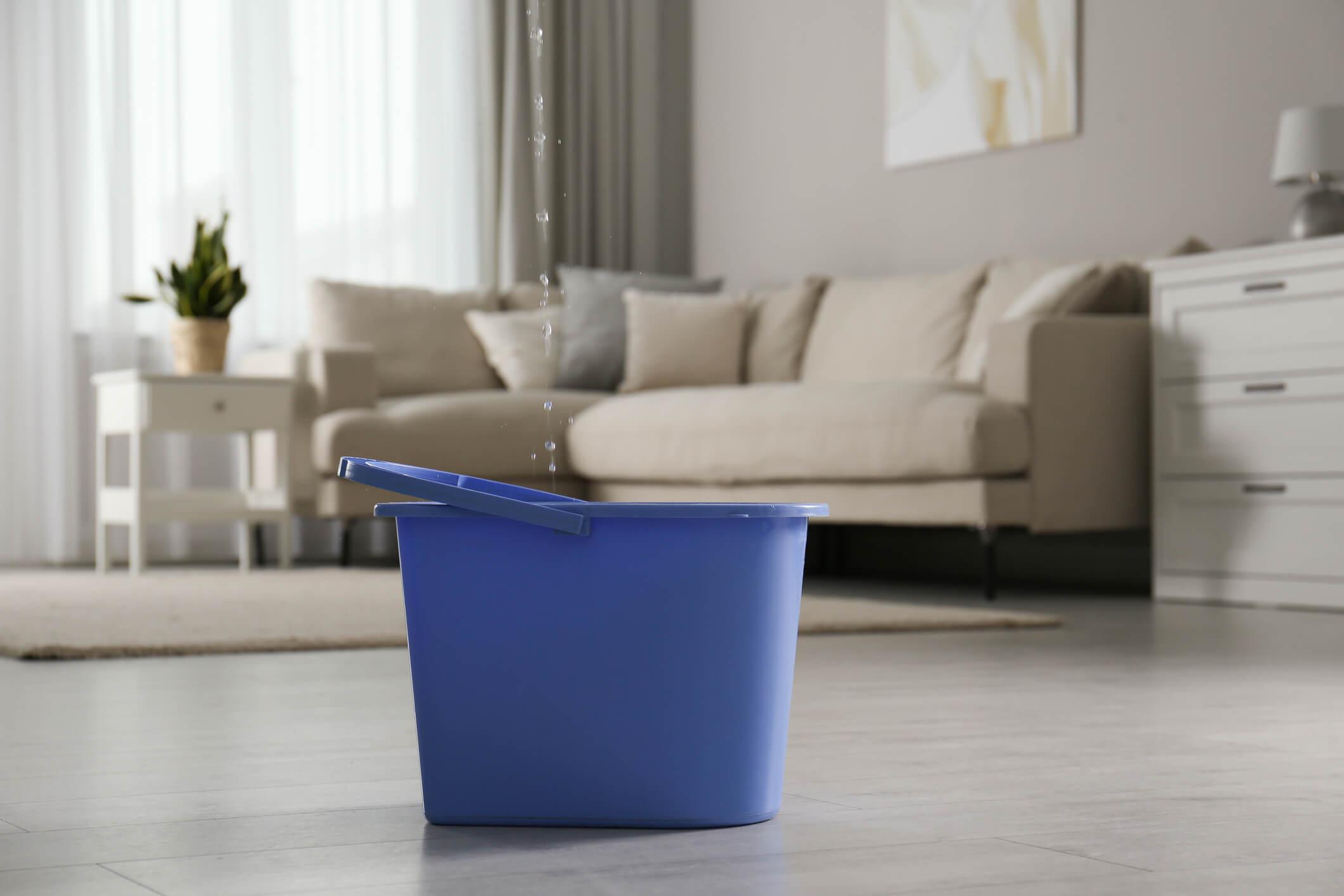How to Prevent Water Damage in Your Home
June 20, 2023

Dealing with water damage is a stressful headache, especially if you lose sentimental items that no one can replace. Water damage can also lead to mold and a loud, messy remediation project. Currently, some 19,000 Indianapolis homes have a 26% chance of being affected by severe flooding in the next 30 years.
Help avoid this headache by working to stop water damage before it starts, with these water-damage prevention tips.
How Can I Prevent Water Damage?
Water damage can happen quickly. Try these water damage prevention tips to prepare before the water starts flowing:
- Learn where your main water shut-off valve is. Make sure you and everyone you live with know where the main water shut-off valve is and how to use it. This is critical to minimizing plumbing-based damage, like a broken pipe. Your water main is usually on an outside wall, often the one facing the street if you’re connected to city water.
- Leave plumbing repairs to the experts. Experienced plumbers are less likely to cause an accident than amateur plumbers, and they know how to react when things go wrong. Hire plumbing repair professionals for that sink or toilet leak.
- Check your sump pump. If you’ve got a basement that’s prone to flooding, you likely have a sump pump installed. Check regularly to make sure it’s working, especially before heavy rain or snow. If you don’t have a sump pump, consider getting one installed.
- Keep an eye out for leaks. Little leaks can turn into big problems without warning. Checking your pipes and faucets regularly can help prevent flood damage and the need for mold remediation (as well as save money on your water bill).
- Clear your gutters regularly. Gutters prevent rainwater from seeping into your foundation. Keeping them clear of debris lets them do this important task well. In Indianapolis, you should clean them at least once or twice a year in mid-fall and late spring. Bump it up to four or six times a year if you have a tree directly above your roof.
- Don’t let your pipes freeze. Indianapolis winters can get frigid. When temperatures drop to 20°F or below, leave your sinks dripping to keep pipes from freezing and bursting. If you have exposed pipes outdoors, make sure they’re well insulated and drain them in fall, where possible.
- Install a water-detection device. If you’re worried about leaks, a detector with an alarm can alert you to spilling water. Some can even shut off the water main automatically when they detect a leak.
- Check your appliances. Appliances that use water can often leak and may go unnoticed for a while if the water stays behind or underneath the machine. Check hoses and hookups on your washing machine, dishwasher, water heater, and refrigerator.
- Automatically empty water collection. Some water heaters and whole-home dehumidifiers collect water without draining it into pipes. Automate this drainage with a condensate removal pump so that forgetting to empty the collection tray won’t flood your basement.
How to Prevent Basement Flooding During Heavy Rains
When it comes to basement flooding due to a storm surge, a sump pump is your best friend. These devices automatically remove water, pumping it to a drain point outside your home and minimizing flooding.
To further prevent flooding:
- Make sure exterior doors and windows are watertight.
- Maintain a graded slope that diverts water away from your home.
- Put in downspout extenders.
- Install French drains in your basement.
- Consider a backwater valve, which a professional can install on your sewer line to prevent backflow into your home plumbing.
Already struggling with flood waters? Basement flood cleanup helps dry out and restore your lowest level, or you can choose whole-home flood remediation for your upper floors.
How to Protect Furniture from Water Damage
If you’re experiencing flooding now or expect your area will flood soon, you can take steps to protect your furniture.
First, remove as much furniture as you can from the affected area, especially if the base or legs are made of wood. Any furniture you can’t remove, elevate out of the water. Restoration companies frequently use Styrofoam blocks to do this, but you can use any stable, non-porous material that can hold the item’s weight. You can also wrap the base of your furniture in plastic sheeting, garbage bags, or other water-blocking materials.
If you can’t remove large furniture, like cabinets, shelves, or hutches, remove whatever they contain, especially from the lowest levels. Contents cleaning and restoration can save some items, but it’s best to prevent as much damage as possible to sentimental items and important documents.
How to Protect Cabinet Doors from Water Damage
Under-sink cabinets in your kitchen and bathroom are some of the first things that will see damage if the pipes start to leak. Protect them from water by:
- Ensuring that your sink is well-sealed.
- Lining the interior of the cabinet with a waterproof shelf liner.
- Adding water-resistant peel-and-stick vinyl tiles to the shelves and walls.
- Applying waterproof stain sealant (on top of food-safe varnish) or cabinet paint.
- Checking regularly under your sink for leaks, so you can catch them early.
- Installing water alarms inside under-sink cabinets.
When Water Damage Prevention Doesn’t Work, We’re Here to Restore Your Home
Sometimes, damage happens anyway. When it does, the IICRC-certified experts at DRYmedic® of Indianapolis are ready to help. We’ll clean up the damage, dry out your home, and help you with the insurance claim. We offer 24/7 emergency service and rapid response time to ensure that your home is taken care of as soon as possible. Call (317) 759-8432 for fast service from restoration experts.